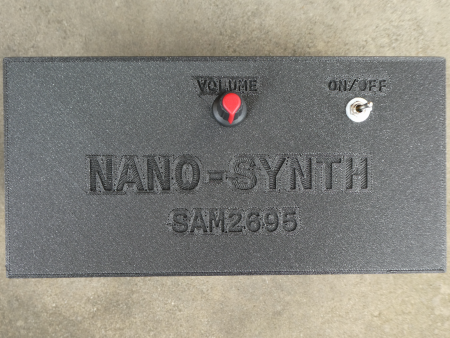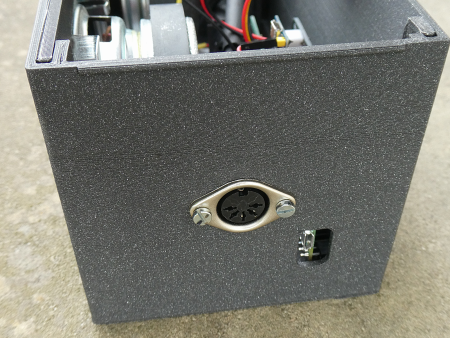Music projects
NanoSynth (SAM2695) standalone with USB
Last updated: 2025-06-17
Quick links
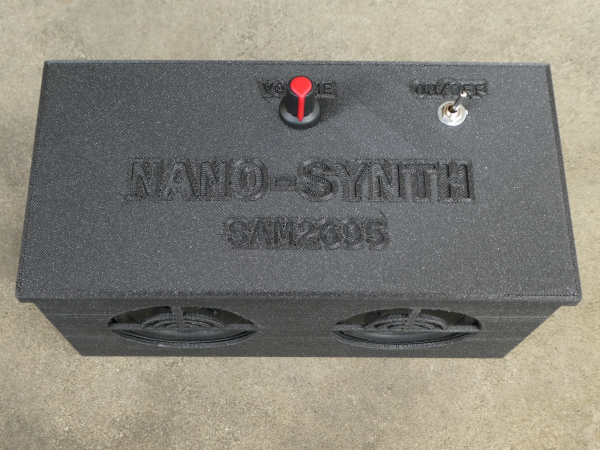
Intro
In the German Make mag there where two articles around MIDI and the SAM2695 chip from the french firm dream (6/2017, 1/2018). They even sold a little board with the chip (5x5 mm²) and a MIDI IN connector called NanoSynth. I bought 2 boards and played with them in 2021, but did not finish the project with an Wemos D1 mini.
The SAM2695 includes a complete GM-wavetable (38-64 voice polyphony) synthesizer and different effects. Typical applications named in the data sheet: battery operated musical keyboards, portable phones, karaoke.
While experimenting with my DRUMPPY software I wanted a little Synth near my computer with speakers and perhaps a battery and USB to reduce cable mess. I still had two old speakers from a radio (60 mm diameter, 6 Ω ) and a spare battery (10000 mAh). I could use a Teensy to get USB to MIDI, but wanted to try the Pi pico chip. More about this on a separate page: https://www.weigu.lu/music/midi_usb_pi_pico/index.html.
Circuit
Beneath the NanoSynth board and the Pi Pico we need a Li-ion single cell battery charger module with protection. I used the module in the picture with a TP4056e Li-Ion charge controller IC and a separate protection IC DW01A. The TP4056 is using the constant-current/constant-voltage (CC/CV) charging method. The module has over-discharge protection (not less than 2.4 V), overcharge protection, over current and short-circuit protection. !There are other types of modules on the market that use the TP4056 but lack any protection circuits.
The other breakout board is a PAM8403 digital power amplifier board with potentiometer to control the volume. It works with 2.5 V to 5 V, an outputs max 2*3 W. So we can use it with the battery (3.7 V).
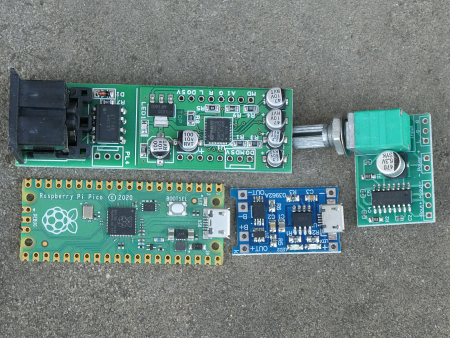
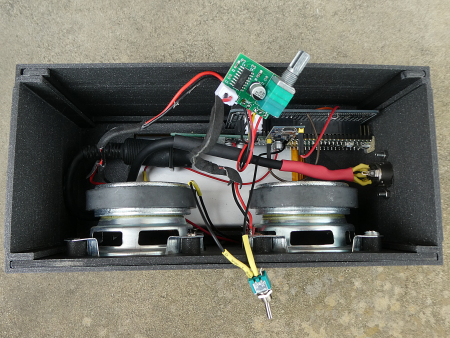
The circuit is build on a prototyping board. It can be powered with 5 V (USB) or by the battery. The Raspberry Pi Pico can be powered with 1.8 V to 5.5 V! and delivers 3.3 V on Pin 36 (300 mA). This 3.3 V are used to power the NanoSynth board! For this I shorted 5 V and 3 V on the board (Pin 2 and 3 LD33 voltage regulator!).
Housing
The housing was drawn with FreeCad. If you want to use it you certainly must change some things in the FreeCAD file. I used two plates to fix the speaker (60 mm) and the PCB. These can be slided into the box (Tip make them 2.5 mm instead of 3 mm thick. I had difficulties to slide them in (hammer :)). If you want to make your own you can use my FreeCAD simple box macro: https://www.weigu.lu/other_projects/freecad/freecad_3dbox_macro/index.html that creates a box with lid. The lid snaps on the box and holds very good. I also used it for this project.
